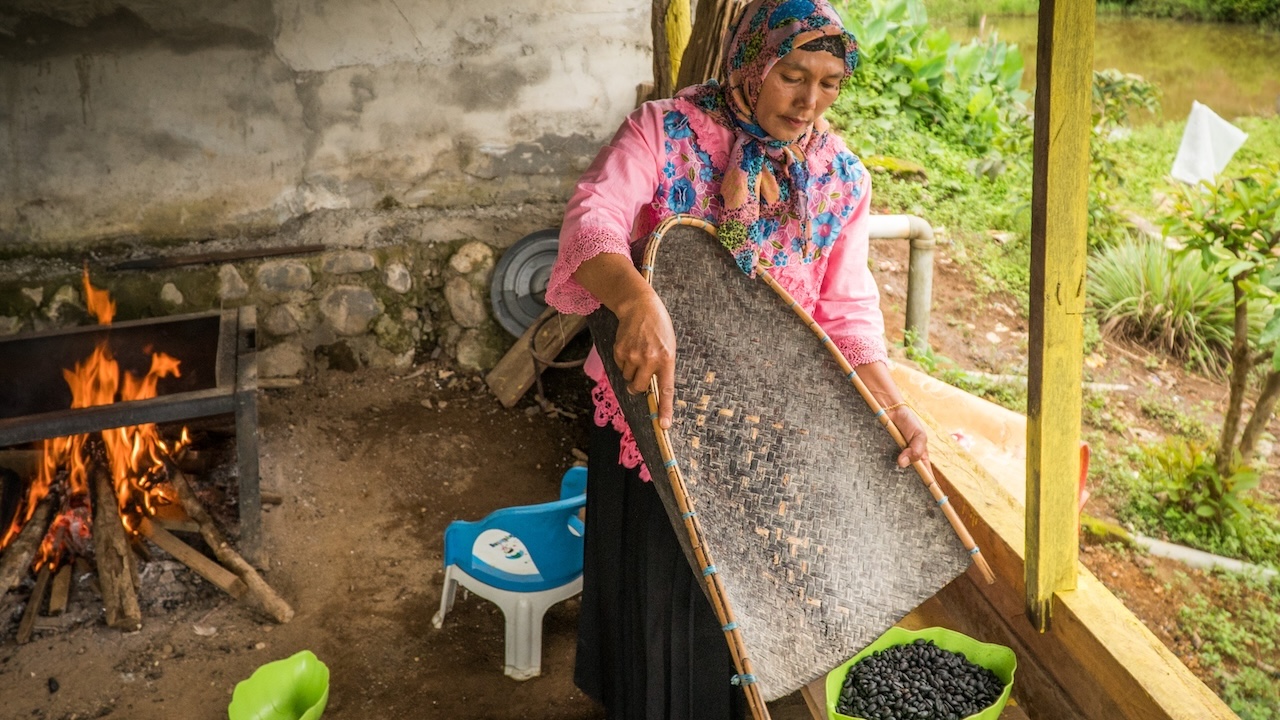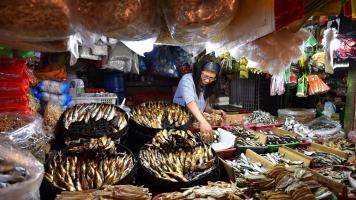
More than 90% of the businesses in BIMP-EAGA are comprised of MSMEs, making them a key growth engine. Photo credit: ADB.
The cooperation program strives to enhance MSME competitiveness, specialization, and innovation through capacity building, market access, and digital tools.
Micro, small, and medium-sized enterprises (MSMEs) are the backbone of the BIMP-EAGA economy.
More than 90% of the businesses in the subregion are comprised of these enterprises, making the sector a key growth engine. According to a 2024 report from the Asian Development Bank (ADB), as of 2023, MSMEs in selected developing countries in Asia and the Pacific, including the four BIMP-EAGA countries, account for an average 64.6% of the workforce and 38.3% of the national economic output.
As such, they are central to achieving sustainable private sector development, economic growth, and poverty reduction.
While MSMEs in BIMP-EAGA operate in all economic sectors, given their size, MSMEs, especially microenterprises, grapple with poor management and lack of access to information, finance, technology, and markets.
Broadening support
According to a midterm review of BIMP-EAGA’s socioeconomic and development agenda, broadening support to microenterprises is needed as they were the most affected by the COVID-19 crisis.
At the 27th BIMP-EAGA Ministerial Meeting in Kota Kinabalu in Malaysia on 16 October 2024, the ministers recognized the role of MSMEs in driving economic growth, trade, investment, export growth, and job creation. The ministers stressed the importance of developing growth pathways to enhance MSME competitiveness, specialization, and innovation through capacity building, market access, and digital tools.
Over the years, BIMP-EAGA has endeavored to support MSMEs. For instance, BIMP-EAGA countries have sought to facilitate trade and investment for MSMEs. This entails streamlining trade rules, regulations, and procedures to improve cross-border trade.
BIMP-EAGA also helped identify and prioritize selected industries and promote relevant investment opportunities within the supply and value chains along key economic corridors.
The cooperation program has also tried to increase the participation of MSMEs in the corridor supply and value chains; increase public–private sector trade and investment promotion initiatives within and outside the subregion; and promote economic zones for complementarity of resources, product diversification, and economies of scale.
In the wake of the pandemic, BIMP-EAGA implemented capacity building initiatives for MSMEs in digital upskilling and adopting digital technologies.
BIMP-EAGA carries out these programs through various projects. To increase participation of MSMEs in the corridor supply or value chain, for instance, the subregion is seeking to establish the BIMP-EAGA Digital Business Center which aims to encourage easier access and broader outreach of services, including online exposure, trainings, market access information, and business matching. The center has so far curated 40 export-oriented SMEs from North Sulawesi.
BIMP-EAGA also plans to continue organizing trade and investment seminars and business matching events such as in Tokyo, Japan, as well as a seminar on the innovation and startup ecosystem in Seoul, Republic of Korea.
Country initiatives
Individually, BIMP-EAGA countries have set out programs to provide a supportive environment for their MSMEs.
Brunei Darussalam. According to the ADB report, as of end-2022, Brunei Darussalam had 6,134 MSMEs (42% were microenterprises and 58% SMEs), a 1.9% increase from 2021. They accounted for 93.4% of all enterprises.
The Ministry of Finance and Economy is the focal ministry for MSME development, while the Darussalam Enterprise (DARe) implements national MSME policies such as financial assistance to MSMEs and startups. DARe offers non-financial assistance, which includes skills upgrading, business networking locally and globally, and entrepreneurship development. It also offers financial assistance, such as a co-matching scheme that finances 70% of selected MSME project costs.
Indonesia. The number of MSMEs in Indonesia grew by 4.2% or 4.4 million firms in 2022. The sector’s contribution to gross domestic product (GDP) was pegged at 60.5% as of 2019.
To further grow the sector, the government offered incentives for banks to finance priority sectors and MSMEs. Pioneering efforts by Kredit Usaha Rakyat, a government-sponsored guarantee loan program for MSMEs, accelerated access to formal financial services. Since it was established in 2019, the Acceleration Board, a dedicated equity market for MSMEs, has become a venue for growth capital financing. The government has also employed a series of policy measures for MSMEs, including a simplified business licensing process that makes it easier for MSMEs to register and operate legally. The national financial inclusion strategy has moved into its next stage, establishing regulations for its 2020 strategy and a financial literacy framework for 2021–2025
Malaysia. MSMEs accounted for 96.9% of all enterprises and 48.5% of the workforce in Malaysia, contributing 39.1% of 2023 GDP. MSMEs are predominantly in services, accounting for 83.9% of the total and providing 64.7% of MSME employment as of end-2023. The number of MSMEs increased by 3.0% to 1.1 million in 2023, of which 69.7% were microenterprises, 28.5% small, and 1.8% medium-sized.
Malaysia has a centralized policy mechanism covering all MSME support measures, which streamlines mid- to long-term MSME development policies. The Ministry of Entrepreneur and Cooperatives Development is the focal ministry for MSME development in the country. The National Entrepreneurship Policy 2030, launched in 2019, is a long-term strategy for MSMEs and entrepreneurship development. Its strategies aim to foster a culture of entrepreneurship, optimize the regulatory environment and financial access, promote holistic entrepreneurship development, create innovation-driven enterprises, enhance MSME business capabilities, and internationalize high-growth firms. The government has been actively promoting MSME digitalization to enhance their competitiveness and productivity.
Philippines. As of end-2023, MSMEs in the Philippines grew in number by 12.3%, accounting for 99.6%, or 1.2 million firms as of end-2023. MSMEs employed 6.4 million workers, or 66.8% of the workforce in 2023.
A 1991 law, the Magna Carta for MSMEs, is the benchmark regulation for MSME development policies in the Philippines, although it technically expired in 2018. The government has put in place an MSME development blueprint through 2028, which seeks to meet the immediate needs of MSMEs while driving them to the forefront of the digital economy. Since 2019, several policies and regulations have been enacted to support MSMEs.
This article was first published by BIMP-EAGA on 3 April 2025.

BIMP-EAGA
The Brunei Darussalam–Indonesia–Malaysia–Philippines East ASEAN Growth Area, or BIMP-EAGA, is a cooperation initiative established in 1994 to spur development in remote and less developed areas in the four participating Southeast Asian countries.

